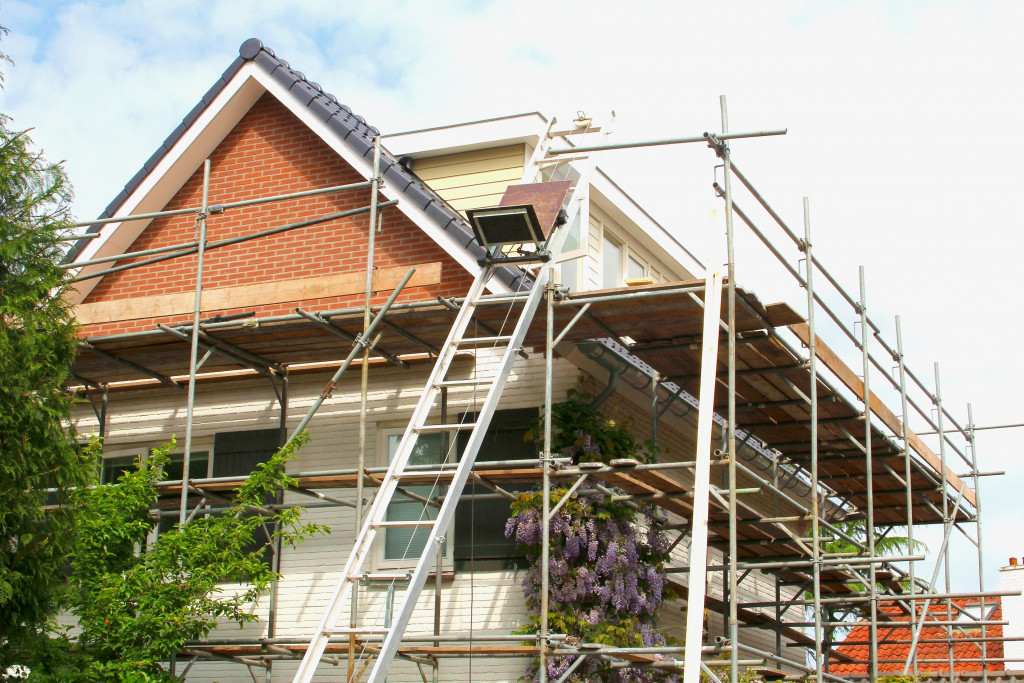- Install a whole home water softener to remove minerals like calcium and magnesium.
- Use point-of-use water filters to remove common contaminants such as chlorine, lead, bacteria, and sediment.
- Regularly clean and maintain plumbing fixtures to prevent mineral deposits, sediment, and bacteria buildup.
- Test your water quality with the help of accredited laboratories.
- Maintain your water storage and distribution systems to prevent bacterial growth.
Having clean and safe water is essential for maintaining good health and well-being. If you’re concerned about your home’s water quality, several easy and effective ways exist to improve it. This guide will explore five simple strategies to enhance your water quality at home. Implementing these methods ensures you and your family can access clean, pure, and great-tasting water.
1. Install a Whole Home Water Softener
Investing in a high-quality whole-home water softener is one of the most effective ways to improve water quality. Hard water, which contains high levels of minerals like calcium and magnesium, can lead to issues such as scale buildup, decreased water pressure, and reduced efficiency of appliances. A water softener works by removing these minerals, preventing scale formation, and improving the overall quality of your water. Softened water benefits your household appliances and plumbing system and provides softer and smoother water for bathing and cleaning.
2. Use a Point-of-Use Water Filter
Another way to enhance water quality is by installing a point-of-use water filter. These filters are typically installed at specific water outlets, such as kitchen faucets or showerheads, and can effectively remove impurities and contaminants from the water. There are different water filters to choose from, such as activated carbon filters, UV filters, and reverse osmosis filters. Depending on your specific needs and concerns, choose a certified filter to remove common contaminants like chlorine, lead, bacteria, and sediment.
3. Regularly Clean and Maintain Plumbing Fixtures
Regular cleaning and maintenance of your plumbing fixtures can significantly improve water quality. Over time, faucets, showerheads, and aerators can accumulate mineral deposits, sediment, and bacteria, affecting the taste and quality of your water. Periodically clean these fixtures with vinegar or a mild cleaning solution to remove buildup. Additionally, consider replacing old or outdated fixtures that may contribute to water quality issues. Upgrading to low-flow fixtures can also help conserve water while maintaining optimal water quality.
4. Test Your Water Quality
To better understand the specific contaminants in your water, consider getting your water tested by a certified laboratory. Water testing can provide valuable insights into the presence of harmful substances like bacteria, lead, pesticides, or other chemicals. You can identify the most appropriate water treatment solutions for your home based on the test results.
Here are tips to test your water quality:
Research Accredited Laboratories
Before selecting a laboratory to perform your water test, ensure it’s accredited by the National Environmental Laboratory Accreditation Program (NELAP). This program ensures that laboratories meet certain standards of accuracy and reliability when testing for contaminants in water.
Choose the Right Test
Different tests are used to detect different types of contaminants, so it’s essential to choose the right one based on your specific needs. For example, a “total coliform” test is commonly used to detect the presence of bacteria in drinking water. In contrast, a “VOCs” test can identify volatile organic compounds like pesticides or industrial solvents.
Gather the Required Samples
The laboratory will require you to collect water samples so that they can accurately test the levels of various contaminants. Make sure to follow the lab’s instructions for sample collection and storage.
Read Your Results
Once the lab has analyzed your samples, they will send you a full report with detailed information about the concentrations of different substances in your water. If any contaminants were detected, use this data to decide which type of treatment system is best suited for your needs.
5. Maintain Your Water Storage and Distribution Systems
If you have a private well or storage tank system, it’s essential to maintain them properly to ensure good water quality. Regularly inspect and clean your well, checking for any signs of contamination or deterioration. Maintaining proper disinfection practices is crucial to prevent bacterial growth in your well. For homes connected to a municipal water supply, ensure that your plumbing system is well-maintained and free from leaks or any potential sources of contamination.
To Wrap It Up
Improving your water quality at home is a worthwhile investment in the health and well-being of your family. By installing a whole home water softener, using point-of-use water filters, regularly cleaning and maintaining plumbing fixtures, testing your water quality, and properly maintaining your water storage and distribution systems, you can ensure that your water is clean, safe, and great-tasting. Remember to choose water treatment solutions that address your concerns and consult with professionals if needed. With these easy steps, you can have peace of mind knowing that you and your family consume and use high-quality water daily.



